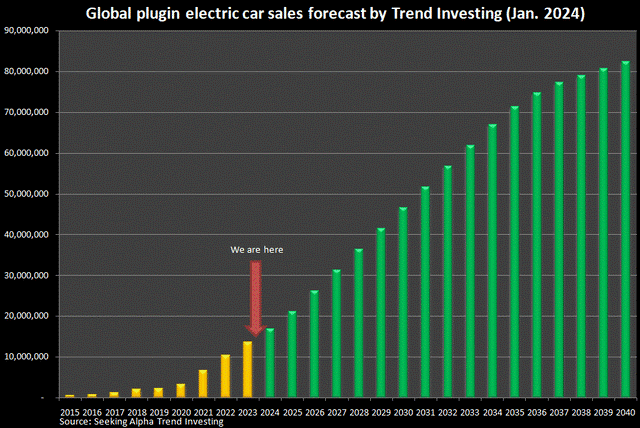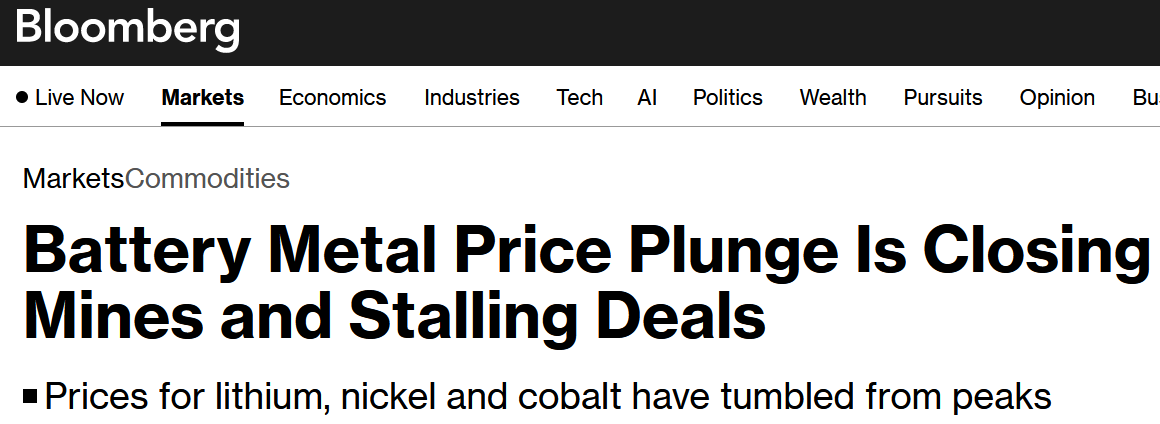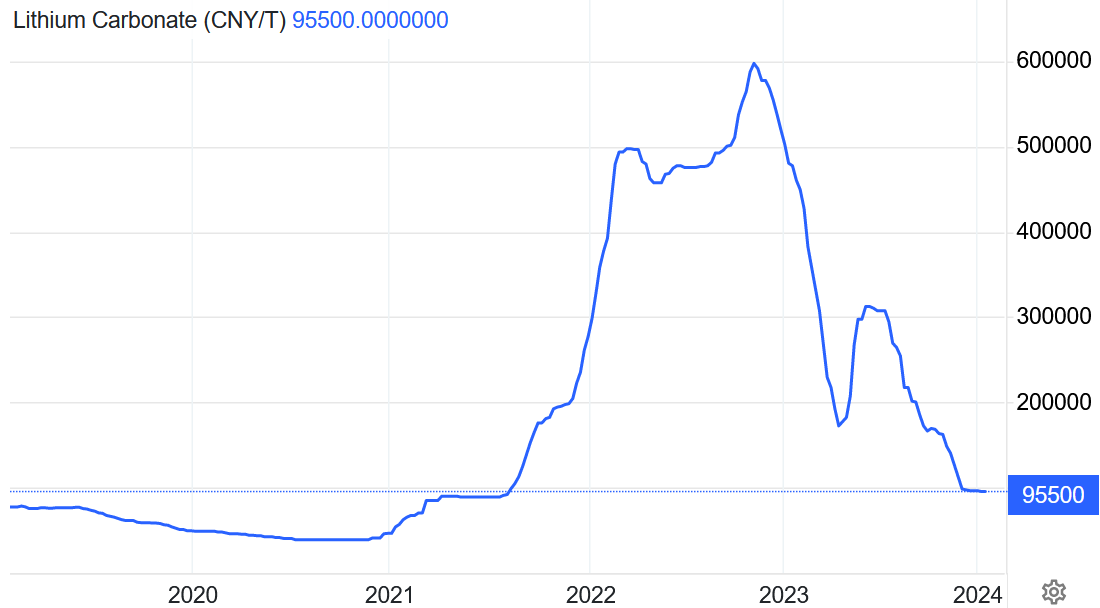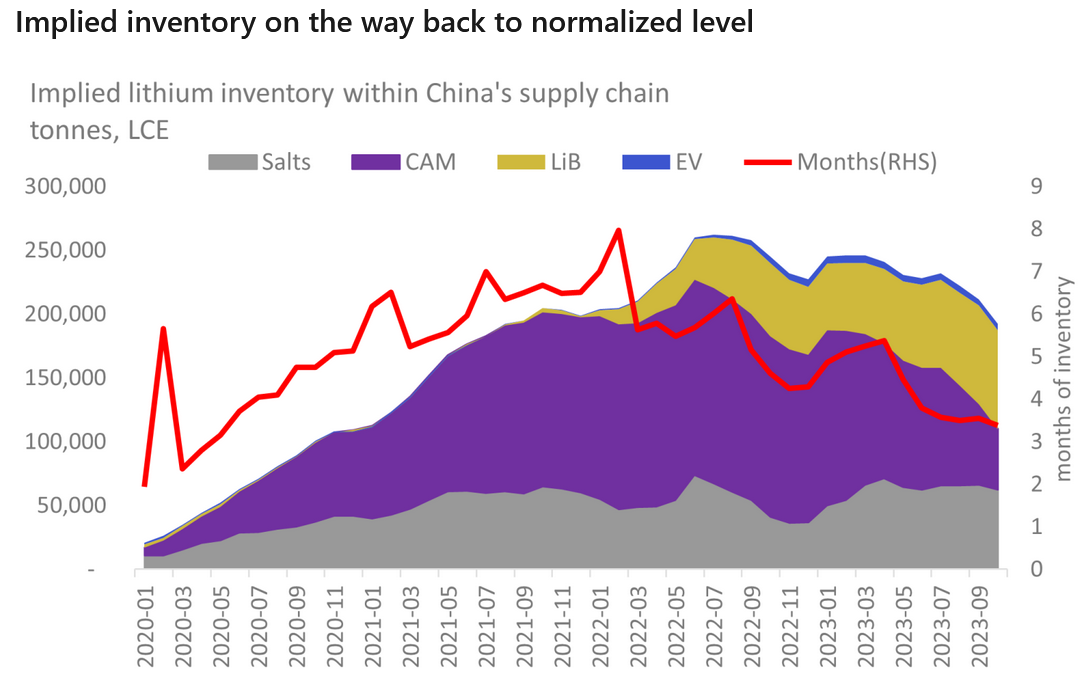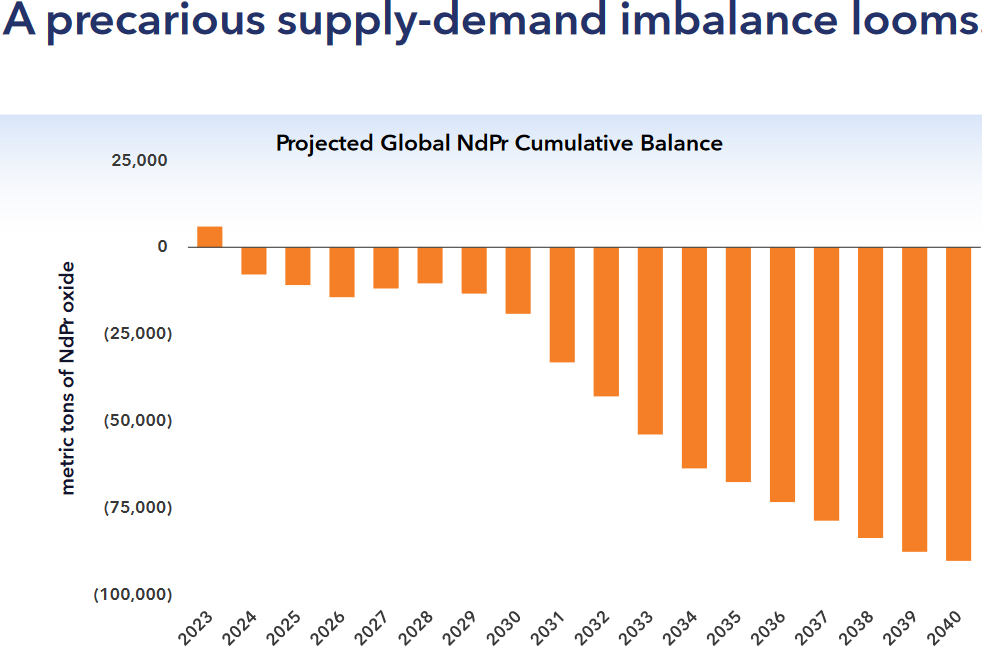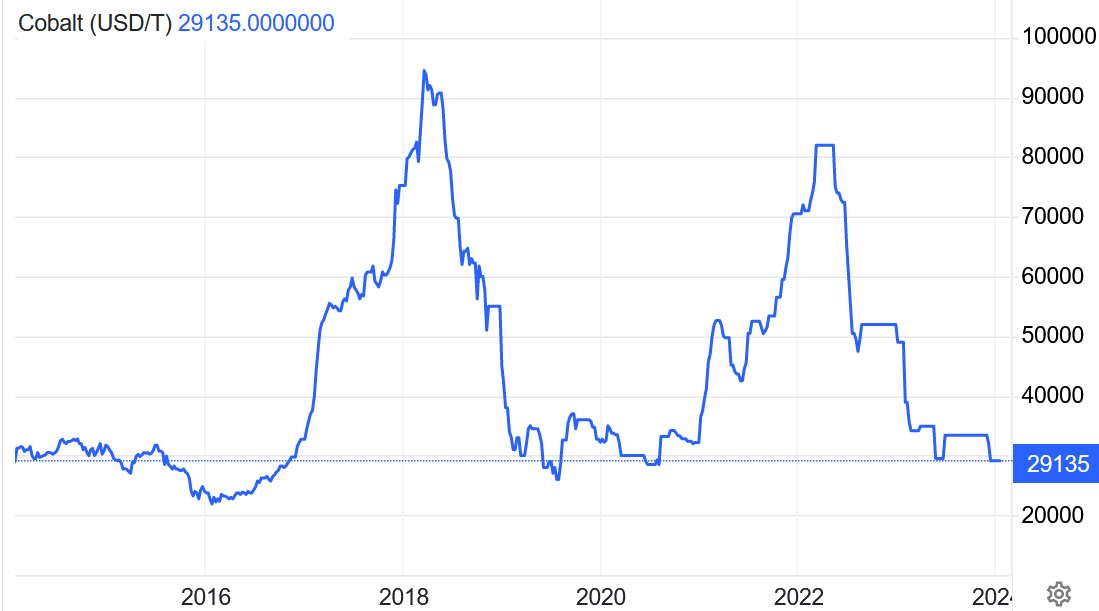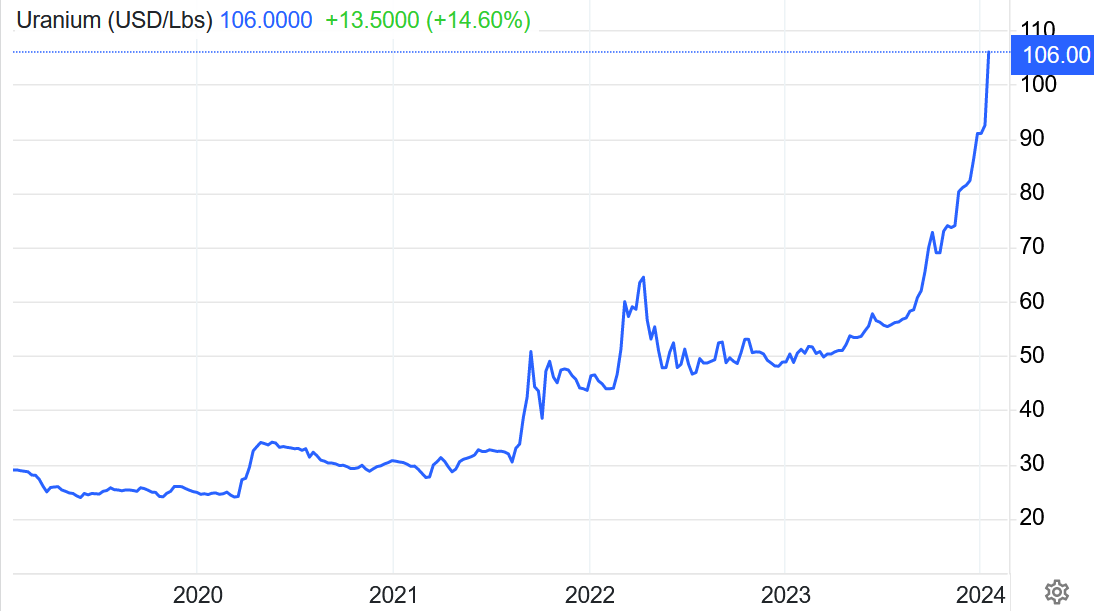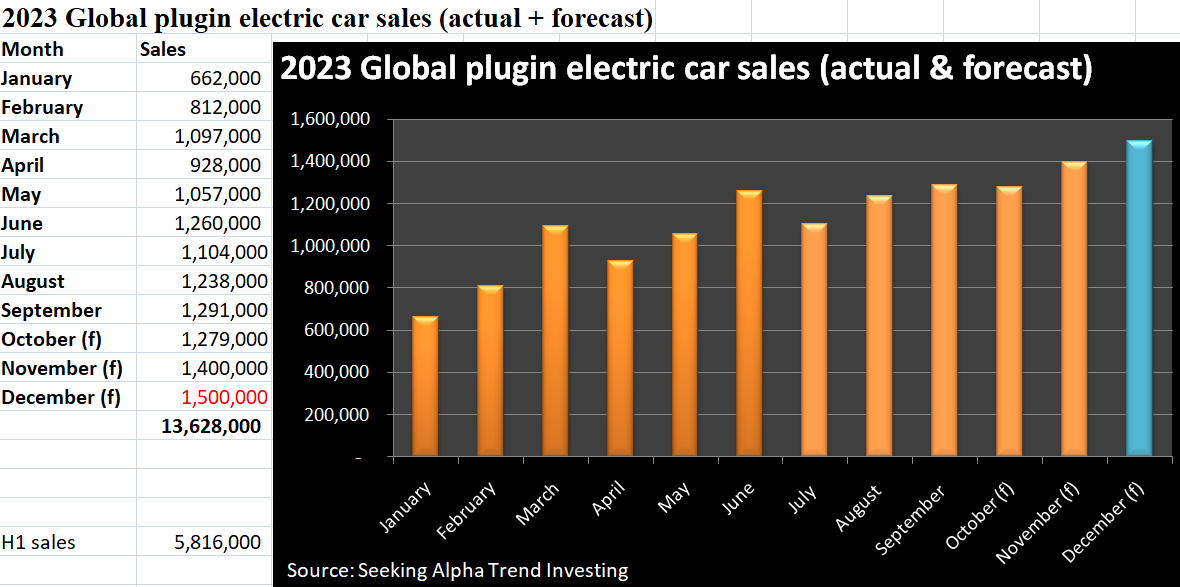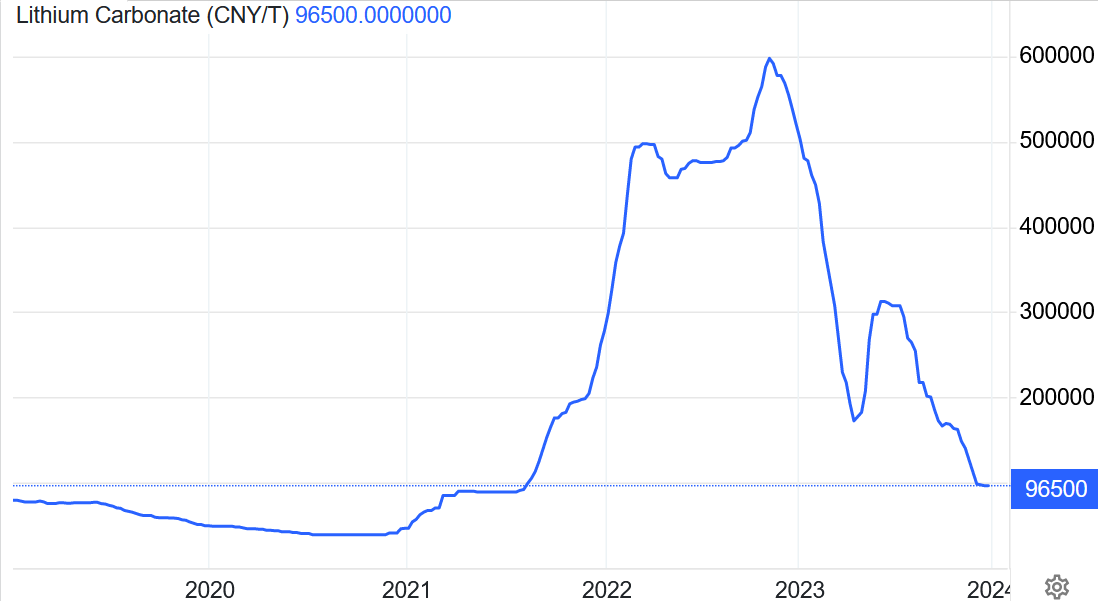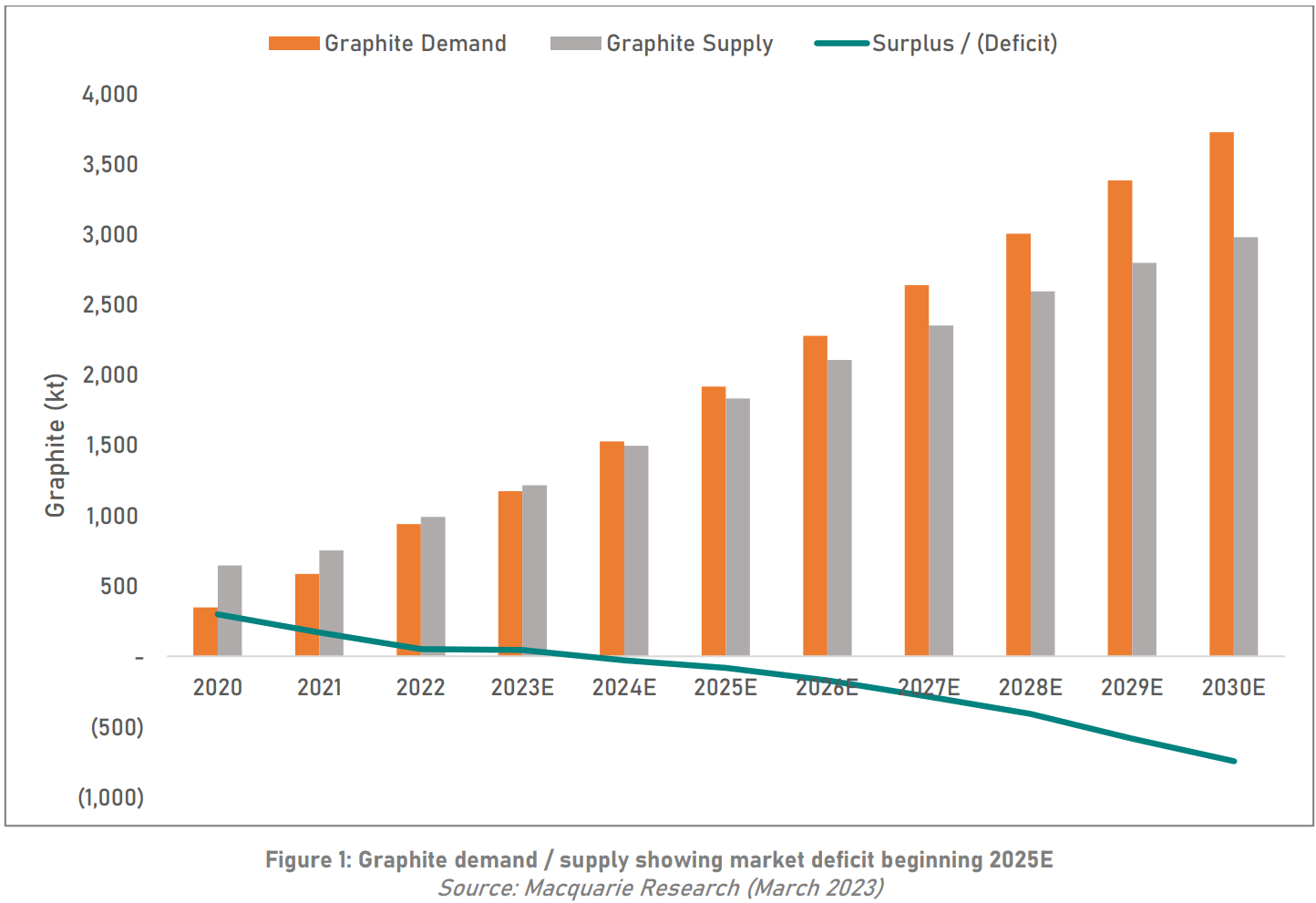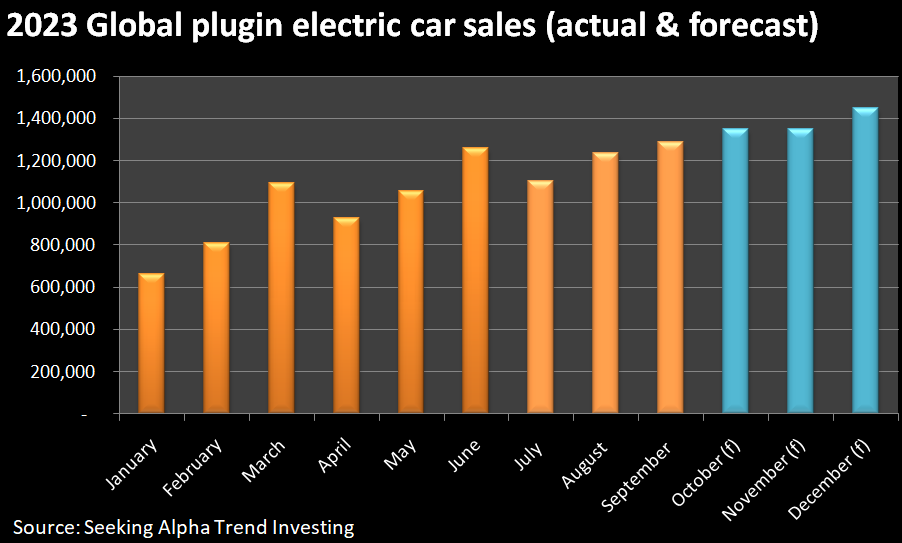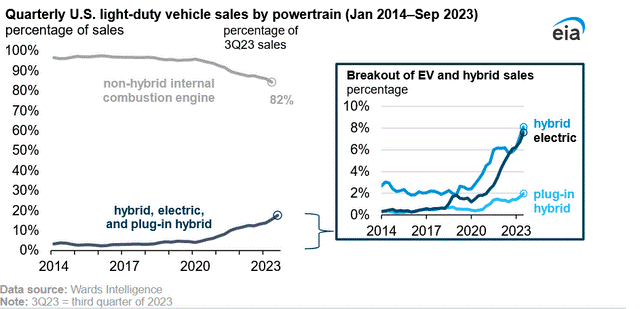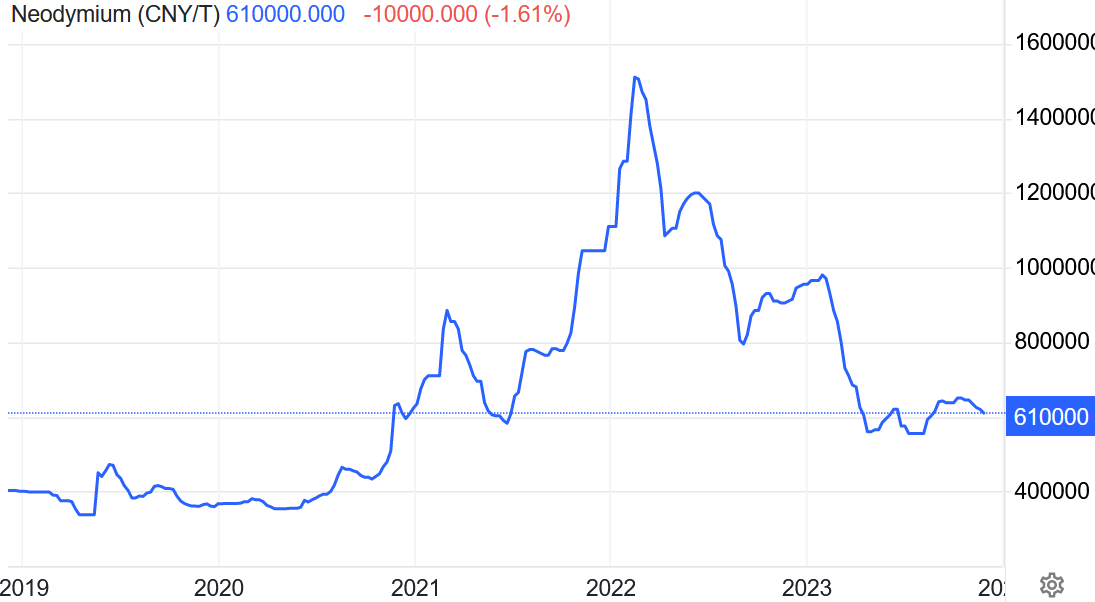Technology Metals Report (04.05.2024): Uranium Price Doubles as the Green Economy Charges Forward
Welcome to the latest issue of the Technology Metals Report (TMR), brought to you by the Critical Minerals Institute (CMI). In this edition, we compile the most impactful stories shared by our CMI Directors over the past week, reflecting the dynamic and evolving nature of the critical minerals and technology metals industry. Among the key stories featured in this report are Ford Motor’s strategic decision to delay its all-electric SUV and truck productions in favor of expanding its hybrid offerings, signaling a broader trend in the automotive sector towards hybrid technologies. The resurgence of the uranium market, with prices doubling due to the growing demand for clean energy, underlines the critical role of uranium in achieving 2050 climate targets. Moreover, the DRC’s decision to suspend nine subcontractors at ERG mines due to non-compliance issues highlights the persistent challenges and evolving regulatory landscape in the cobalt industry. This action reflects a commendable direction by the Congo government towards enhancing industry standards and governance. The entry of Aclara Resources Inc. into the U.S. rare earth processing market was both newsworthy and offered Jack Lifton an opportunity to update readers on the advancements of REE processes in North America today.
This week’s TMR Report also highlights significant developments across the global critical minerals landscape, including the European Union and the United States’ efforts to broaden their reach in securing critical minerals amidst a stalled bilateral agreement, and Ionic Rare Earths Limited’s joint venture with Viridis Mining to establish a rare earth refining and recycling presence in Brazil. The U.S. Department of Energy’s $75 million investment in a Critical Minerals Supply Chain Research Facility aims to reduce reliance on foreign sources and bolster national security. Furthermore, the collaboration between NOVONIX Limited and Lithium Energy Limited to form Axon Graphite Limited through a public listing emphasizes the strategic moves within the natural graphite sector. MP Materials’ awarded tax credit to advance U.S. rare earth magnet manufacturing marks a significant step towards reducing dependency on imported critical materials. Lastly, the extension of Canada’s Mineral Exploration Tax Credit (METC) and the Biden-Harris Administration’s announcement of a $4 billion initiative in tax credits for clean energy supply chain projects underline the ongoing efforts and investments to strengthen the critical minerals sector, underscoring the importance of these developments for our energy security, economic prosperity, and environmental sustainability.
To become a CMI member and stay informed on these and other topics, click here
Ford to delay all-electric SUV, truck to focus on offering hybrid vehicles across its lineup by 2030: (April 04, 2024, Source) — Ford Motor has announced a strategic shift in its electric vehicle (EV) plans, postponing the production of a new all-electric SUV and pickup truck to focus on expanding its hybrid vehicle offerings across its entire North American lineup by 2030. Despite this delay, Ford remains committed to the EV market, planning to continue its investments in electric technology. The production of a three-row SUV in Canada has been rescheduled from 2025 to 2027, and the launch of a next-generation pickup, codenamed “T3,” has been moved from late 2025 to 2026. This decision reflects broader industry trends, with many automakers reassessing their EV strategies amid slower-than-expected adoption rates and high production costs. Additionally, Ford aims to leverage new battery technology to enhance the durability and value of its future EVs, focusing its efforts on newly established plants like the “BlueOval City” in Tennessee, rather than converting existing facilities.
Uranium price creates new ASX boom: (April 04, 2024, Source) — In 2023, uranium prices doubled from US$48 to US$91 per pound, peaking at US$106 in 2024, highlighting a significant recovery from previous lows. This resurgence, fueled by the demand for clean energy and carbon emission reductions, has revived interest in uranium projects, now seen as viable at around US$100 per pound. Global initiatives to expand nuclear energy, with significant investments in new reactors in the US, China, and France, underscore uranium’s critical role in meeting 2050 climate targets. Despite temporary price dips, the market outlook remains positive, driven by global nuclear expansion and supply constraints. This bullish sentiment has revitalized the uranium sector, particularly benefiting ASX-listed companies engaged in uranium exploration and mining, reflecting a broader industry optimism and investment in nuclear energy’s future.
Congo Suspends ERG Subcontractors at Major Cobalt Mine: (April 04, 2024, Source) — The Democratic Republic of Congo has suspended nine subcontractors at Eurasian Resources Group (ERG) mines, citing non-compliance with laws requiring Congolese ownership. This move, announced on March 14, intensifies tensions between ERG and the government, which is pushing for greater domestic benefits from the mining sector. Congo, a major global supplier of cobalt and a significant copper producer, is enforcing regulations to ensure local control of mining operations. The government’s actions also reflect ongoing disputes with ERG over asset development and environmental concerns. Despite the suspensions, ERG insists it adheres to local laws, emphasizing its support for Congolese suppliers and its commitment to legal compliance. The sanctions target subcontractors at Metalkol and Frontier, two key ERG projects in Congo, but are not expected to affect output due to a transitional period for bringing in compliant firms. The controversy highlights Congo’s efforts to secure more benefits from its mineral resources while navigating challenges with international mining companies.
Disruptive Shift to Rare Earth Processing as Aclara Moves into American Market: (April 03, 2024, Source) — Jack Lifton of the Critical Minerals Institute (CMI) offered an analysis on Aclara Resources Inc.‘s (TSX: ARA) strategic entry into the U.S. rare earth processing market. Aclara aims to utilize ionic clay deposits from Chile and Brazil for heavy rare earth elements (HREEs) crucial in magnet manufacturing. They’ve partnered with the Saskatchewan Research Council and Hatch Ltd. for processing facility development. Lifton, however, questioned the project’s ambitious timeline and compared Aclara’s efforts to established players like Energy Fuels Inc. (NYSE American: UUUU | TSX: EFR), which is advancing in light rare earth (LREE) separation. The column highlights the competitive nature of the rare earth market, with Aclara facing challenges from Energy Fuels, MP Materials (NYSE: MP) and Ucore Rare Metals Inc. (TSXV: UCU | OTCQX: UURAF). Lifton suggests Aclara needs deeper industry integration and strategic partnerships, indicating a complex journey ahead in a competitive and technological landscape.
EU, US seek broader reach on critical minerals as own deal stalls: (April 03, 2024, Source) — The European Union (EU) and the United States (US) are not expected to finalize a critical minerals agreement at an upcoming meeting. Despite this, they plan to launch initiatives to partner with resource-rich countries. The EU aims for an accord allowing minerals processed in Europe to be eligible for US clean vehicle incentives, focusing on cobalt, graphite, lithium, manganese, and nickel. A senior European Commission official cited the absence of an imminent deal but confirmed a joint commitment to future agreements. Difficulties include US demands for labor standards verification at mining sites. Moreover, the EU and US are seeking to differentiate their offerings from China’s by emphasizing infrastructure funding, sustainability, and value-added business opportunities for developing countries, with plans to engage with ministers from Namibia, Ukraine, Kazakhstan, and Uzbekistan among others.
Ionic Rare Earths Limited (ASX:IXR) and Viridis Mining to Form REE Refining and Recycling JV in Brazil: (April 03, 2024, Source) — Ionic Rare Earths Limited (ASX:IXR) and Viridis Mining and Minerals Limited (ASX:VMM) have announced a 50:50 joint venture (JV) to establish a dominant position in the global supply chain for Rare Earth Elements (REE) in Brazil. This strategic partnership aims to utilize IonicRE’s intellectual property and Viridis’ global assets to become a leading supplier of high-quality, reliable rare earths crucial for various industries and energy transition. The JV plans to co-fund a Brazilian production facility, aiming to complete a Scoping Study by the end of 2024 and a preliminary feasibility study within 18 months. IonicRE’s recent success in producing rare earth oxides at its Belfast facility and Viridis’ promising Colossus Ionic Adsorption Clay REE Project in Brazil highlight the joint venture’s potential to accelerate growth and leverage Brazil’s rich rare earth resources. This collaboration aligns with Brazil’s ambition to become a global leader in rare earth production, offering an exceptional opportunity for both companies to advance their positions in the rare earth supply chain significantly.
DOE Invests $75 Million to Strengthen Nation’s Critical Minerals Supply Chain: (April 02, 2024, Source) — The U.S. Department of Energy (DOE), under President Biden’s Investing in America agenda, announced a $75 million investment for a Critical Minerals Supply Chain Research Facility, aimed at bolstering the nation’s supply chains for critical minerals and materials essential for energy security, economic prosperity, and national security. This initiative, part of the Bipartisan Infrastructure Law, focuses on reducing reliance on foreign sources by accelerating the production of critical minerals from diverse sources. The facility will collaborate with other government initiatives and aims to enhance supply chain efficiencies and support a circular economy. A supply chain assessment highlighted the risks of over-reliance on foreign and adversarial sources for these materials, underscoring the importance of this project for the U.S.’s clean energy transition, manufacturing sector revitalization, and overall competitive edge. The project will involve nine national laboratories, emphasizing community engagement and benefits in line with the Justice40 Initiative. This is in addition to FECM’s commitment of $58 million since January 2021 to further support critical mineral and material projects across the country.
NOVONIX Limited and Lithium Energy Limited to Combine Natural Graphite Interests with Intention to Take Combined Business Public: (April 02, 2024, Source) — NOVONIX Limited (NASDAQ: NVX | ASX: NVX) and Lithium Energy Limited (ASX: LEL) are combining their natural graphite exploration interests into a newly formed company, Axon Graphite Limited, aiming for a public listing through an initial public offering (IPO) on the Australian Securities Exchange (ASX). Both companies will each retain up to 28.57% ownership post-IPO, intending to create a significant natural flake graphite project. This move is designed to unlock value for shareholders of both NOVONIX and LEL, with eligible shareholders given priority in the IPO. The combination of NOVONIX’s Mt. Dromedary project and LEL’s Burke and Corella projects under Axon signifies the development of a major resource aimed at supporting the electric vehicle and energy storage sectors. The IPO seeks to raise between $15 million to $25 million, setting the stage for Axon to become a key player in the battery materials sector, benefiting from the anticipated growth in demand for anode materials and high-grade graphite products.
MP Materials Awarded $58.5 Million to Advance U.S. Rare Earth Magnet Manufacturing: (April 01, 2024, Source) — MP Materials (NYSE: MP) has been awarded a $58.5 million tax credit by the IRS and Treasury, under the Section 48C Advanced Energy Project, to support the construction of the first fully-integrated rare earth magnet manufacturing facility in the United States. This grant was part of a competitive process by the Department of Energy assessing around 250 projects for their viability and environmental impact. The facility will focus on producing neodymium-iron-boron (NdFeB) magnets, essential for various applications including electric vehicles, wind turbines, and defense systems. With global demand for these magnets expected to triple by 2035, MP Materials’ initiative aims to commence the commercial production of magnet precursor materials in Fort Worth, Texas, by summer and finished magnets by late 2025, supplying to companies like General Motors. This project addresses the U.S.’s near-total reliance on imports for these critical materials, mainly from China, and aims to establish a sustainable, end-to-end supply chain.
Relief and Renewal: Canada’s METC Extension Breathes New Life into Mineral Exploration: (March 31, 2024, Source) — The Canadian government announced the extension of the Mineral Exploration Tax Credit (METC) until March 31, 2025, addressing concerns in the mining sector over the future of flow-through financings. This move has been met with relief, particularly as the deadline approached without prior confirmation, sparking anxiety among stakeholders. The METC plays a vital role in supporting exploration companies by enhancing flow-through share pricing, thereby facilitating fundraising. Critics, including Peter Clausi from the Critical Minerals Institute (CMI), had voiced concerns over the uncertainty caused by the government’s silence, which hampered planning and investments. The extension is seen as crucial for continued investment in the sector, particularly benefiting junior mining companies and associated industries, including First Nations communities. Despite debates over the sufficiency of the projected $65 million support, the decision signifies the government’s recognition of mining’s importance to Canada’s economy and its commitment to sustainable development and Indigenous economic participation.
Central Asia’s rising role in global rare earth metal competition: (March 31, 2024, Source) — Central Asian countries are becoming increasingly significant in the global competition for rare earth metals, crucial for technological and economic development. Eldaniz Gusseinov and Abakhon Sultonazarov highlight this trend against the backdrop of geopolitical shifts, such as the Ukraine conflict, prompting Western countries to seek alternatives to Russian and Chinese supplies. Central Asia, rich in mineral reserves, is eyed by the West to reduce dependencies, particularly as they move towards renewable energy sources. Kazakhstan emerges as a focal point with substantial reserves of rare earth elements like scandium, yttrium, and lanthanides, pivotal for industries ranging from computing to automobile manufacturing. The U.S. and EU are exploring investments in Kazakhstan to diversify their supply chains. Meanwhile, the U.S. and China vie for influence in the region, leveraging their strategic advantages. Central Asia’s untapped mineral wealth, including significant rare earth deposits, positions it as a critical player in global supply chains, with the potential to alter the dynamics of resource control and economic development amidst great power competition.
Biden-Harris Administration Announces $4 Billion in Tax Credits to Build Clean Energy Supply Chain, Drive Investments, and Lower Costs in Energy Communities: (March 29, 2024, Source) — The Biden-Harris Administration has announced a groundbreaking $4 billion initiative in tax credits to foster over 100 projects across 35 states aimed at bolstering clean energy manufacturing, reducing greenhouse gas emissions, and securing the supply chain for critical minerals. This move, part of President Biden’s Investing in America agenda and funded by the Inflation Reduction Act, represents a major leap forward in the domestic production of clean energy and the strategic development of critical minerals essential for energy independence and technological advancement. Managed by the Department of Energy (DOE) in partnership with the Treasury and the IRS, the initiative focuses on a diverse range of projects, including significant investment in communities historically dependent on fossil fuels, aiming to create high-quality jobs and promote a transition to a cleaner economy. The Qualifying Advanced Energy Project Tax Credit (48C) program, rejuvenated with a $10 billion boost from the Inflation Reduction Act, provides up to a 30% investment tax credit for approved projects that meet specific wage and apprenticeship standards. With a particular emphasis on critical minerals recycling, processing, and refining, this program is a key component of the Administration’s strategy to ensure a sustainable, secure, and competitive energy future.
Investor.News Critical Minerals Media Coverage:
- April 03, 2024 – Ecclestone Takes Critical Mineral Hit Lists to Task in the Hallgarten + Co Resource Monthly “Debasing Criticality’s Currency” https://bit.ly/3IZLkwV
- April 03, 2024 – Disruptive Shift to Rare Earth Processing as Aclara Moves into American Market https://bit.ly/43J4C2V
- March 31, 2024 – Relief and Renewal: Canada’s METC Extension Breathes New Life into Mineral Exploration https://bit.ly/4cFr1lI
- March 29, 2024 – Boosting Market Interest Through the Strategic Advantage of a Stellar Advisory Board https://bit.ly/3vlAWwk
Investor.News Critical Minerals Videos:
- April 04, 2024 – Danny Huh on Neo Battery Materials’ Process Innovation, 9th Patent and Position in NBM Korea https://bit.ly/3VL2V2X
Critical Minerals IN8.Pro Member News Releases:
- April 04, 2024 – Power Nickel Announces C$2 Million Private Placement https://bit.ly/49meqkQ
- April 03, 2024 – Voyageur Pharmaceuticals Ltd Grants Deferred Share Units Compensation to Independent Directors https://bit.ly/3U3sDyH
- April 03, 2024 – Zentek Announces U.S. Distribution Agreement for ZenGUARDTM-Enhanced Surgical Masks with Medwell Solutions https://bit.ly/4cKM4U3
- April 03, 2024 – Defense Metals Appoints Guy de Selliers de Moranville to the Board of Directors https://bit.ly/3vzlxsj
- April 03, 2024 – Panther Metals PLC – Fulcrum Metals Announce Potential Disposal of Uranium Projects https://bit.ly/44012BX
- April 02, 2024 – First Phosphate Drills a 2 m Vein of Massive Apatite at Its Begin-Lamarche Project in Saguenay-Lac-St-Jean, Quebec, Canada https://bit.ly/3VIAGCb
- April 02, 2024 – Fathom Continues to Expand the Historic Gochager Lake Deposit to Depth with Intersections of Semi-Massive to Massive Sulphide Mineralization https://bit.ly/3TKmO7I
- April 02, 2024 – CBLT Announces Program at Past Producer Falcon Gold and Revisits Historical High Gold Values https://bit.ly/49jcVnl
- April 02, 2024 – Panther Metals PLC – Obonga Graphite: Awkward East Exploration Permit Application https://bit.ly/4atD3gm
